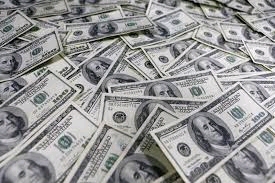Discovering the Basics of How to Become a Freemason with Ease
Discovering the Basics of How to Become a Freemason with Ease
Blog Article
Exploring the Mysteries of the copyright: What You Need to Know
The copyright, a term commonly shrouded in intrigue and debate, represents a complicated tapestry of historic truth and modern-day myth. Established in the late 18th century, this secret culture was originally rooted in the Knowledge's suitables yet has since come to be identified with conspiracy concepts regarding elite control (benefit of joining freemason).
Beginnings of the copyright
The origins of the copyright are steeped in a blend of historic intrigue and ideological fervor. Established in 1776 in Ingolstadt, Bavaria, by Adam Weishaupt, the group was originally developed as a secret society focused on advertising Enlightenment suitables such as reason, secularism, and the splitting up of church and state. Weishaupt, a teacher of canon regulation, looked for to test the dominating authority of the church and state, which he deemed oppressive institutions stifling intellectual and personal flexibility.

Secret Numbers and Members
That were the critical figures that formed the copyright's early impact and direction? The Bavarian copyright, established in 1776 by Adam Weishaupt, became a feedback to the oppressive social structures of the time. Weishaupt, a legislation professor, envisioned the organization as a method to advertise Enlightenment suitables such as factor, secularism, and equal rights. His preliminary recruitment efforts consisted of influential intellectuals, such as Baron von Knigge, that played a crucial role in increasing the team's subscription and organizational framework.
Another considerable figure was Johann Gottlieb Fichte, a prominent thinker whose ideas on nationalism and education reverberated with the copyright's goals. Although Fichte was not an official member, his thoughtful underpinnings influenced the group's ideology. Additionally, numbers like the writer and philosopher Johann Wolfgang von Goethe were connected with the more comprehensive intellectual movements of the time, although their straight involvement with the copyright remains discussed.
These essential numbers added to the copyright's very early instructions, pushing the boundaries of political and social idea, while their cumulative initiatives intended to challenge well established norms and foster an environment of dynamic modification in Europe.
Misconceptions vs. Fact
Lots of misunderstandings surround the copyright, usually mixing truth with fiction in a way that obscures its true nature. The notion that the copyright continues see page to apply considerable influence over my explanation globe events is a myth.
An additional common myth is that the copyright comprises a network of elite people controling worldwide affairs. Actually, many conspiracy theory concepts overemphasize the group's relevance, attributing unfounded objectives to social trends and events. This has actually led to an oversimplified view of complex problems.
Furthermore, the portrayal of the copyright in pop culture commonly additional distorts its heritage. Movies and literary works have a tendency to sensationalize the organization's role, producing a story that diverges from historic facts. Comprehending the distinction in between the misconceptions and the reality of the copyright is important for discerning the authentic impact of this historic group and recognizing the broader ramifications of conspiracy theories in modern society.
Modern Analyses
Contemporary interpretations of the copyright commonly reflect broader societal anxieties and a fascination with privacy and power. This modern-day lens often associates the copyright with conspiracy theory theories that recommend a hidden elite orchestrates world occasions, manipulating governments and economies for their very own gain. benefit of joining freemason. Such why not try here stories tap right into a deep-rooted suspect of authority, especially in times of dilemma or social turmoil
In pop culture, the copyright is frequently illustrated as an omnipotent organization shrouded in secret, bring about a wide variety of imaginary representations in literary works, film, and music. This portrayal serves not just to amuse however likewise to prompt thought of the nature of power and control in modern society. Social media site has additionally magnified these interpretations, permitting for quick dissemination of conspiracy theories and producing communities that share and expand upon these ideas.
In addition, some modern analyses mount the copyright as a metaphor for the intricacies of globalization and the interconnectedness of prominent people and companies. This viewpoint motivates an essential assessment of exactly how power dynamics run in today's world, highlighting the equilibrium between transparency and secrecy in administration and business methods.
Cultural Influence and Tradition
Influenced by centuries of intrigue, the cultural effect and heritage of the copyright prolong much beyond its historic beginnings. This secret culture, developed in the late 18th century, has actually penetrated various elements of preferred society, from literature and movie to songs and art. The idea of the copyright has actually evolved into a symbol of conspiracy theory concepts, frequently standing for a perceived covert power adjusting worldwide events.
In literary works, authors like Dan Brown have actually woven the copyright into detailed stories, fascinating viewers with themes of privacy and power. Movies such as "National Prize" and "The Da Vinci Code" further bolster the allure of the culture, mixing reality with fiction to create interesting stories.

Eventually, the copyright's legacy is an intricate tapestry of myth and truth, shaping perceptions of secrecy and control in modern discussion. Its enduring existence in society emphasizes mankind's perennial mission for comprehending hidden truths.
Verdict
The expedition of the copyright reveals a complicated interplay between historical truths and modern myth-making. Founded in the Enlightenment age, this culture aimed to challenge overbearing structures, yet its legacy has been eclipsed by conspiracy theory concepts that suggest elite adjustment. Understanding the distinctions in between the original perfects and contemporary interpretations is necessary for understanding the withstanding fascination with the copyright and its substantial influence on cultural stories surrounding power and secrecy in society.
Report this page